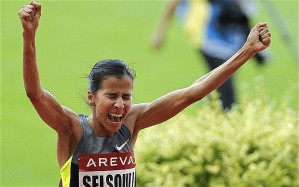In the run up to the London 2012 Olympics, controversy surrounding doping in professional athletics dominated the news. Dwain Chambers’ possible comeback to the games after serving an Olympic lifetime ban after testing positive for steroids in 2003 sparked a plethora of opinion on the internet and most interestingly, from fellow competing athletes.
Furthermore, what was not expected to surface half way through the games were serious allegations of doping across the board, including athletes claiming it being the reason behind Usain Bolt’s incredible performance.
Illegal performing enhancing drugs have been used across many sports and by many athletes over the years. Lance Armstrong was hounded for over a decade with allegations of doping since his return to cycling following cancer. He fought for years to protect his reputation of 7 times Tour de France winner and all time greatest cyclist, until just a month ago, he was branded as being part of “the most sophisticated, professionalised, and successful doping program that sport has ever seen”. He had a lifetime ban imposed upon him for the allegations to be proven true by the International Cycling Union following further claims from fellow riders.
What I recognise from reading about these stories is a culture of serial doping among professional athletes. Most notably, the world 1500m Moroccan marathon runner Mariem Alaoui Selsouli was banned just four days before the opening ceremony of the Olympic games.
Having just returned from a previous doping ban less than a year before and being tipped for gold in London, Selsouli tested positive for performance enhancing drugs including diuretic furosemide and she was expelled from the games.
This has nothing to do with healthy competition. The drugs must be so readily available that nowadays it is simply too easy to take a few shortcuts to be the best. To be a successful athlete takes time – and so does being successful in any profession for that matter. Half of the satisfaction which comes from a victory is defined by effort – the time and resources invested in you getting to that position in the first place. Taking the easy route and coming out on top in sport must be a very dissatisfying feeling – which is probably why athletes persevere in the culture of doping in the hope of eventually finding true success – but it never comes.
You would think the fear of never being able to compete for your country again would be a sober enough thought to ensure people are put off. Great runners like Paula Radcliffe are leading anti-doping campaigns in an effort to emphasise how these days, athletes do not know if they are competing on a level playing field because of the complexities of the substances and the fairly lackadaisical doping system which exists at the moment.
This is not a culture which can be resolved quickly, but if this continues, it will become inherent in the system of athletics and the values of traditional competition will be lost forever. If the Olympic legacy is to continue for the next generation, athletes must collectively object against the ethos of drug taking until tougher legislation is introduced. In order for younger people and wider society to rebuild trust in the sport, this is a necessity.



Pingback: A not so level playing field? Doping in women’s running | EightLane